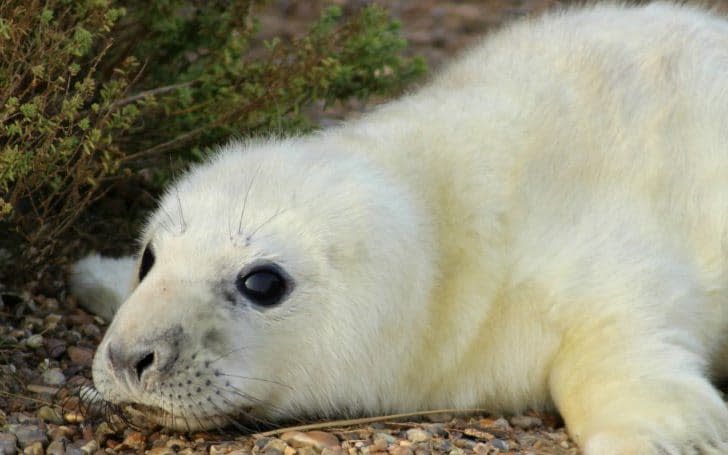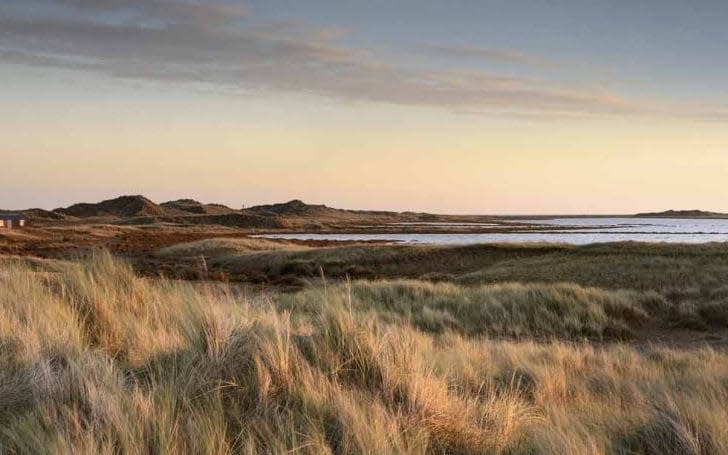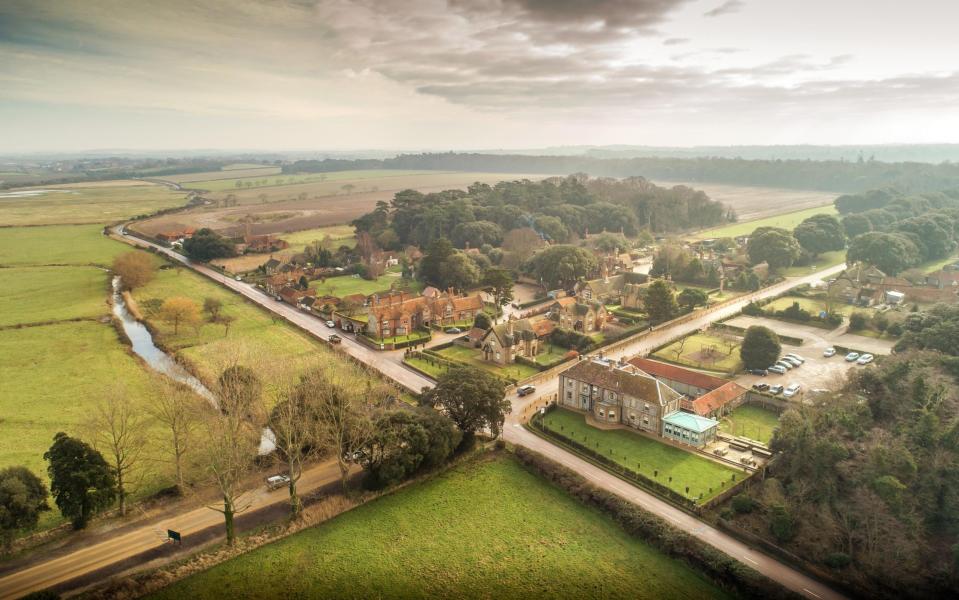England's greatest wildlife spectacle – just a couple of hours from London

Midwinter on the Norfolk coast may not exactly be beach weather, but the bodies stretched out on the strand seem totally in their element. From the shallows to the sandy shore and all the way up to the dunes, they mill about or take leisurely naps, filling the width of the beach. Wrapped in thick blubber and slick, silky coats (dark slate for the adults, pure white for the pups), they all seem quite oblivious to the bitter North Sea wind. We sightseers may be shivering as we bob in a boat, admiring their antics, but conditions here could not be more ideal for these grey seals.
We're at Blakeney National Nature Reserve and this is Blakeney Point, a shingly spit whose habitat hosts England's largest grey seal colony. Winter's far from balmy conditions may not appeal to beach-loving humans, but they suit the seals so well that this is the peak of their pupping season. "Last winter, over 3,500 grey seal pups were born here," says Jason Bean, who's captaining today's seal-spotting trip with Beans Boats (beansboattrips.co.uk). "We're expecting this season's count to be higher."

Given the volume of phocine flesh that's lolling about on this beach, it's hard to believe that grey seals were almost unknown here 15 years ago. "We used to get only common seals, which have their pups in summer," reveals Jason. "They disperse after breeding, so our season was limited. But since the greys colonised, there are seals on the point pretty much year-round, which means we can share them with even more people."
Seeing wild animals at close proximity is always remarkable, but seals are not North Norfolk's sole natural wonder. Wildlife, wild spaces and big, open skies are this region's biggest draws. In summer, Blakeney Point's seals are joined by several thousand terns, while winter excursions see a supporting cast of shorebirds and geese. Elsewhere, deer and birds of prey are a feature of coastal and hinterland hikes, as are discoveries such as windmills, stately homes and characterful pubs.

I'm splitting my stay here between two such pubs: The Globe in the small town of Wells-next-the-Sea, and The Victoria Inn at nearby Holkham. Between them are the wetlands and pinewoods of Holkham National Nature Reserve, within whose boundaries lies Holkham Beach, North Norfolk's signature landmark. As well as being a magnet for wildlife, its four miles of dune-backed sands are a recreational resource for people seeking windswept walks in the glorious rawness of nature.
Balancing the needs of people and wildlife isn't easy. "We welcome 800,000 visitors each year, plus 300,000 dogs," says Jake Fiennes, Holkham's head of conservation, who I meet at the visitor centre. "Although we put up signs, there's always a risk of disturbance to wildlife." A conservation strategy to zone the beach is in the pipeline, giving dogs and kite-flying free rein on some stretches while discouraging them in others. "It should benefit the terns and plovers that nest directly on the sand, as well as wintering larks and buntings that need quiet spaces for foraging."

The success of one of Jake's previous projects is evidenced all along Lady Anne's Drive, the access track connecting Holkham village to the beach. "When I arrived two years ago, there was no water on these fields," he tells me. "I wanted to bring nature closer, engaging visitors with the natural world, so we raised water levels and introduced a dynamic grazing regime. Breeding birds such as lapwing and snipe immediately benefitted and our wintering waterfowl also responded well."
Jake points out various species of duck – shoveler, wigeon, teal – going about their business within yards of all the parked cars. It's bird-watching without need for binoculars. The wigeon are close enough to admire the drakes' saffron caps and peach-tinged chests, as unperturbed by our presence as if this were a city park. "There are 6,000 of them on site," reveals Jake, "but the real showstoppers are pink-footed geese. Around 30,000 roost on the reserve. Come back at dusk and you'll see what I mean."

To mix things up in the meantime, I take in the parkland surrounding Holkham Hall, which is one of the finest examples of Palladian architecture in Britain. A tour of the house fills my afternoon with artworks by Rubens and Gainsborough, plus a bedroom that's not been slept in since Queen Victoria was a houseguest. Afterwards, I admire the park's deer herd, then return to the marsh as the sun starts to set.
I get to Lady Anne's Drive with the last of the light lingering on the horizon. Every twig of the roadside poplars is etched against a clear, crisp sky. From out on the marshes, hidden in shadows, comes the mewing of lapwings and whistling of wigeons. Just before the final glimmer of daylight is extinguished, the geese begin to arrive in skeins, the formations coalescing into a wheeling mass of birds. There are hundreds if not thousands of them, honking loudly as they descend to the safety of the reserve.

It's surely one of Britain's greatest wildlife spectacles. In a time where the natural world is faced with ever-mounting threats, this proliferation of life is all the more wondrous to behold. Who needs the Serengeti? With large mammals and birds in abundance – and all remarkably easy to see – this lonely stretch of coast serves up a sensational English safari.
James's trip was before the latest lockdown. Holidays are not currently allowed.
Rooms (with breakfast) at The Globe (theglobeatwells.co.uk) cost from £120 per night, and from £150 at The Victoria Inn (holkham.co.uk). Trains (greateranglia.co.uk) serve Sheringham and Kings Lynn, with coastal bus connections via the CH1 (sanderscoaches.com) and 36 (lynxbus.co.uk) routes.
Further information at visitnorthnorfolk.com.


